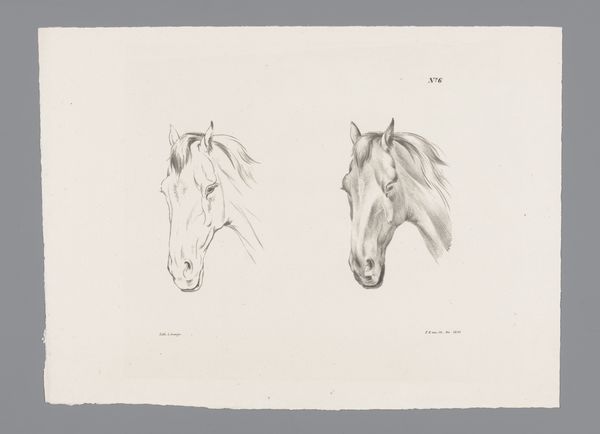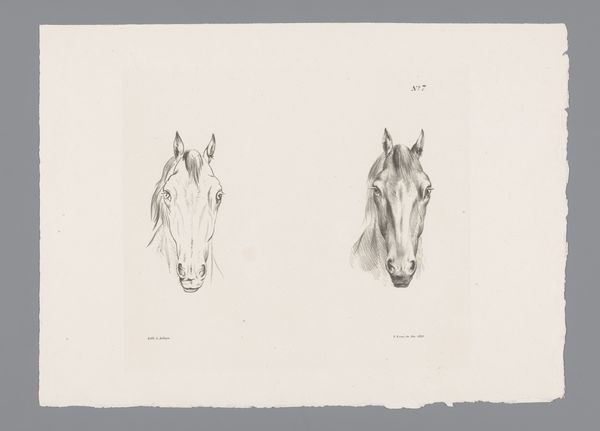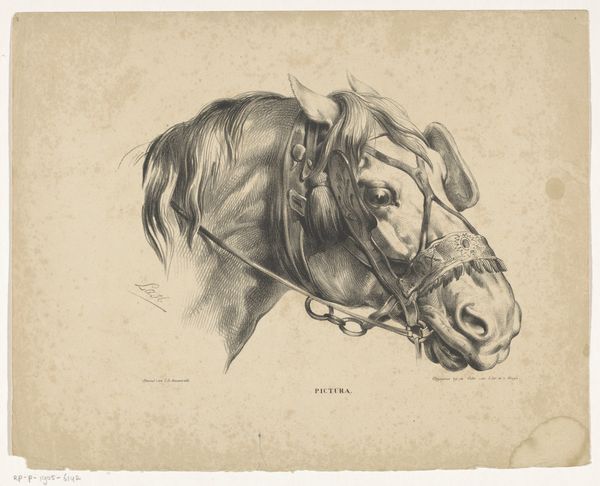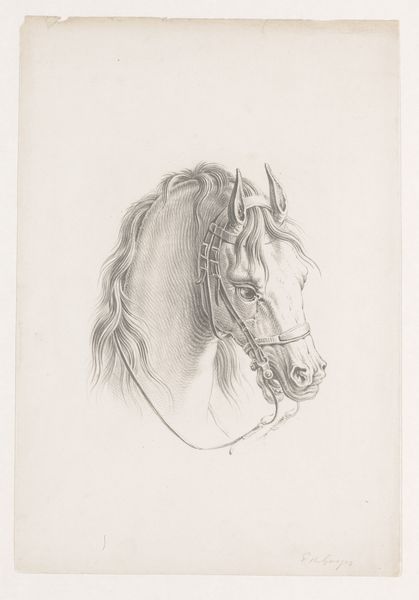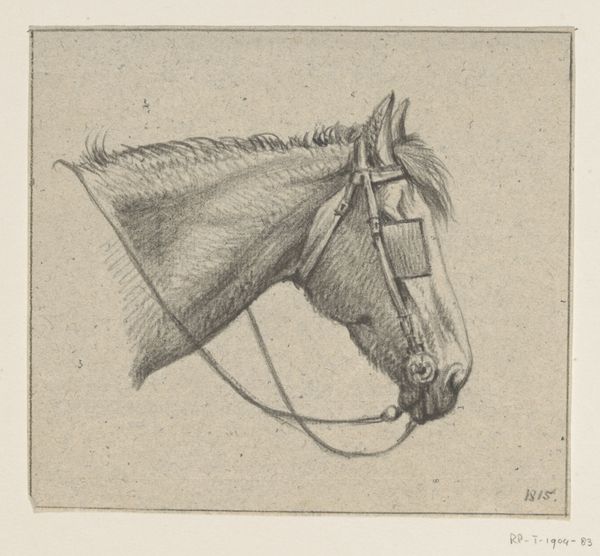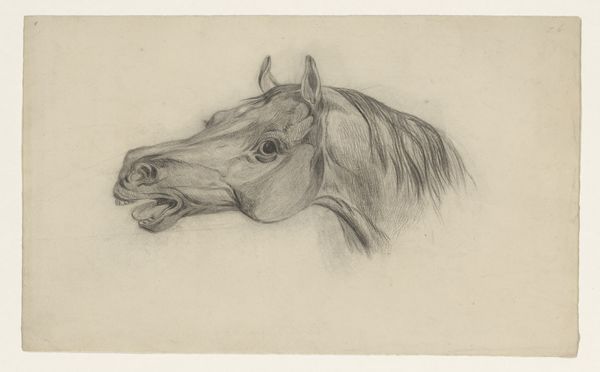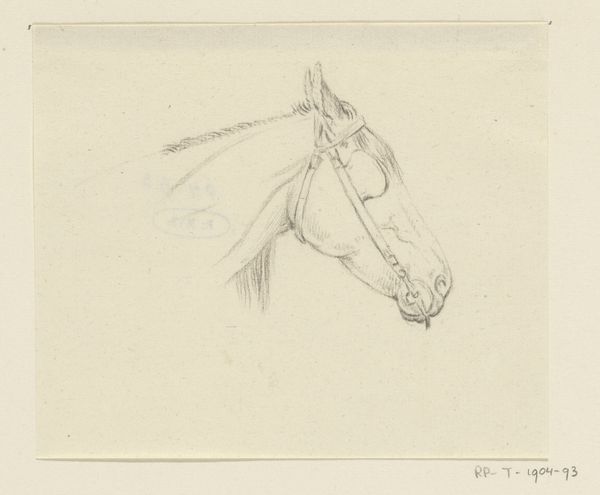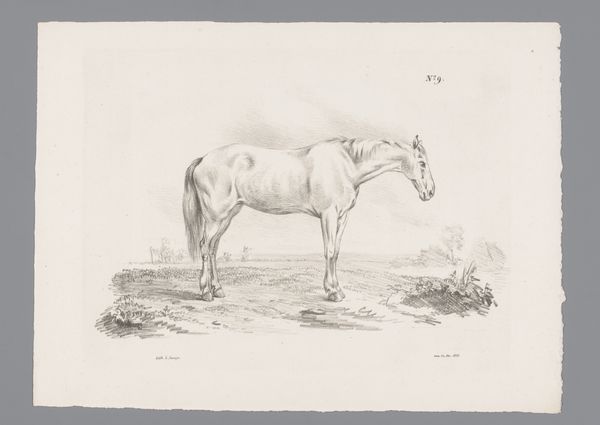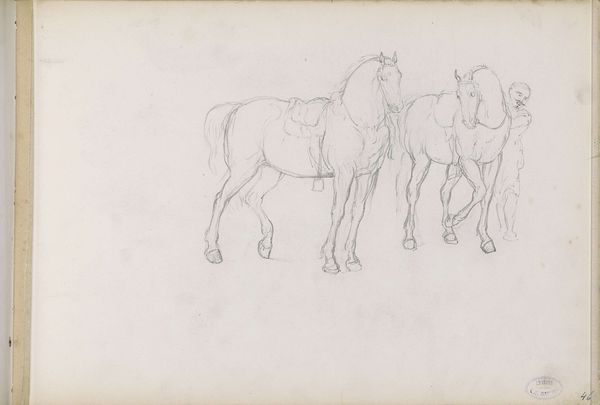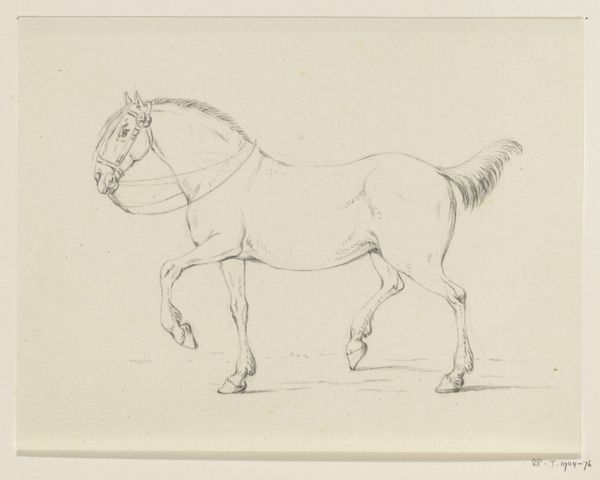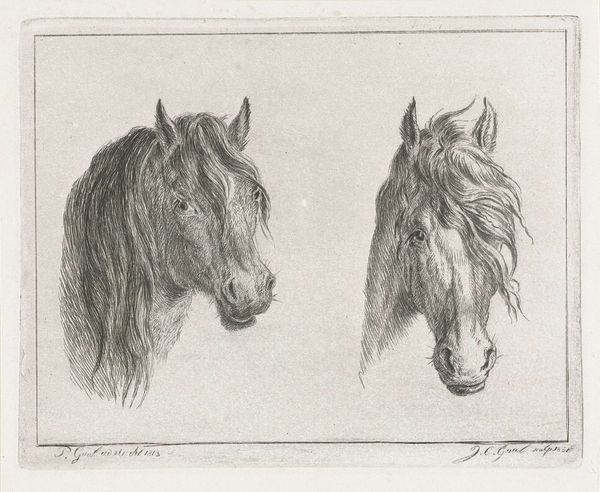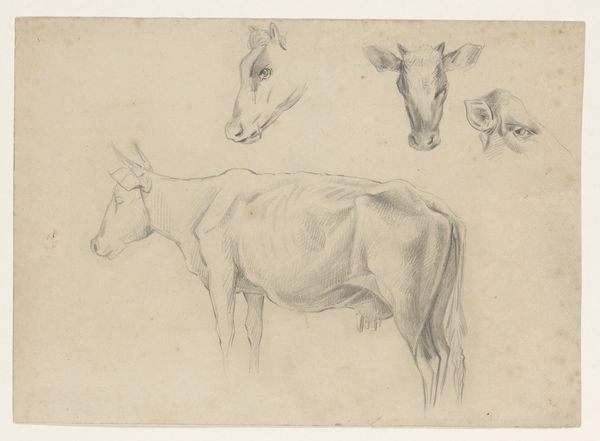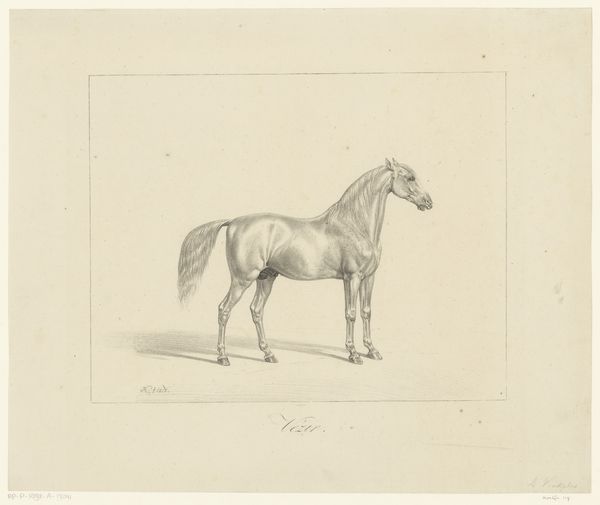
drawing, pencil
#
drawing
#
animal
#
neoclassicism
#
pencil
#
sketchbook drawing
Dimensions: height 256 mm, width 357 mm
Copyright: Rijks Museum: Open Domain
Editor: Here we have Pieter Frederik van Os's 1835 pencil drawing, "Two Studies of a Horse's Head." There’s a quietness to this work, an almost classical simplicity in how the horses are rendered. What do you see in this piece? Curator: It strikes me as an intriguing exploration of archetype. The horse, for millennia, has carried significant cultural weight – representing nobility, power, freedom, even untamed nature. Here, though, we see it rendered as studies, almost scientific in their approach. Van Os isn’t just depicting a horse; he’s deconstructing the symbol, inviting us to analyze its inherent form. Notice how one sketch is more defined than the other? Editor: Yes, the one on the right has a sharper outline and shading. Why present it this way? Curator: Perhaps it is a commentary on different modes of perception and remembrance. The distinct, clearly-defined head might represent established ideas about horses - what we believe we know about them. While the other, fainter sketch can stand for intuition. A reminder that what is lasting is the emotional link with the depicted animal. Are the anatomical studies and the idealized animal form competing here, coexisting or integrated? Editor: That’s a fascinating point about memory. The horse has gone from a wild creature to a tool of labour, to a symbol, as you said, of nobility. It's as if this drawing carries that whole history. Curator: Precisely! The symbols of our collective memory can have different cultural meanings across historical contexts. Editor: This piece is far more complex than I initially thought. I’ll definitely be contemplating its layered meanings next time I see a horse. Curator: Indeed. It is through these layers that a deeper cultural understanding emerges.
Comments
No comments
Be the first to comment and join the conversation on the ultimate creative platform.

